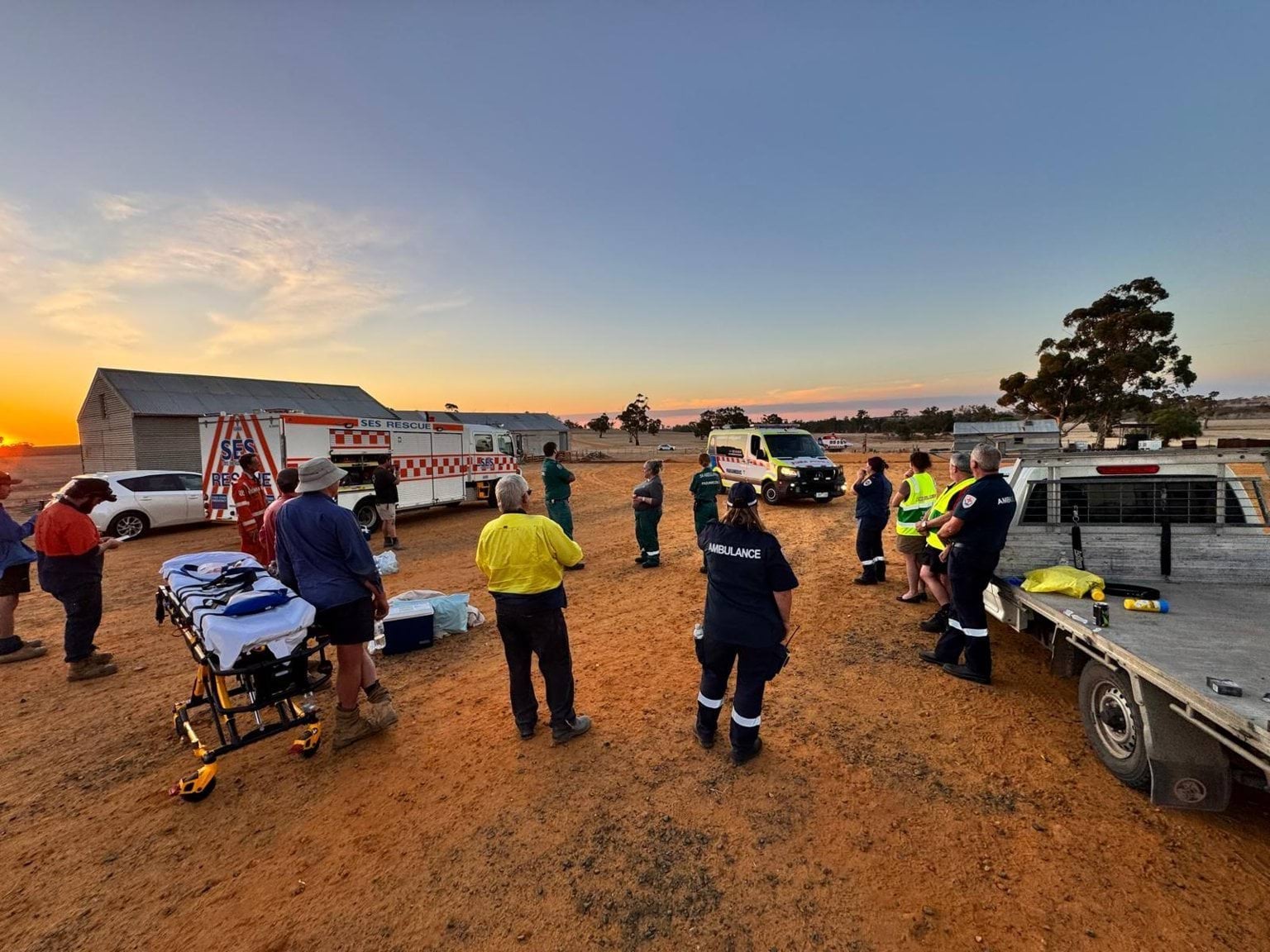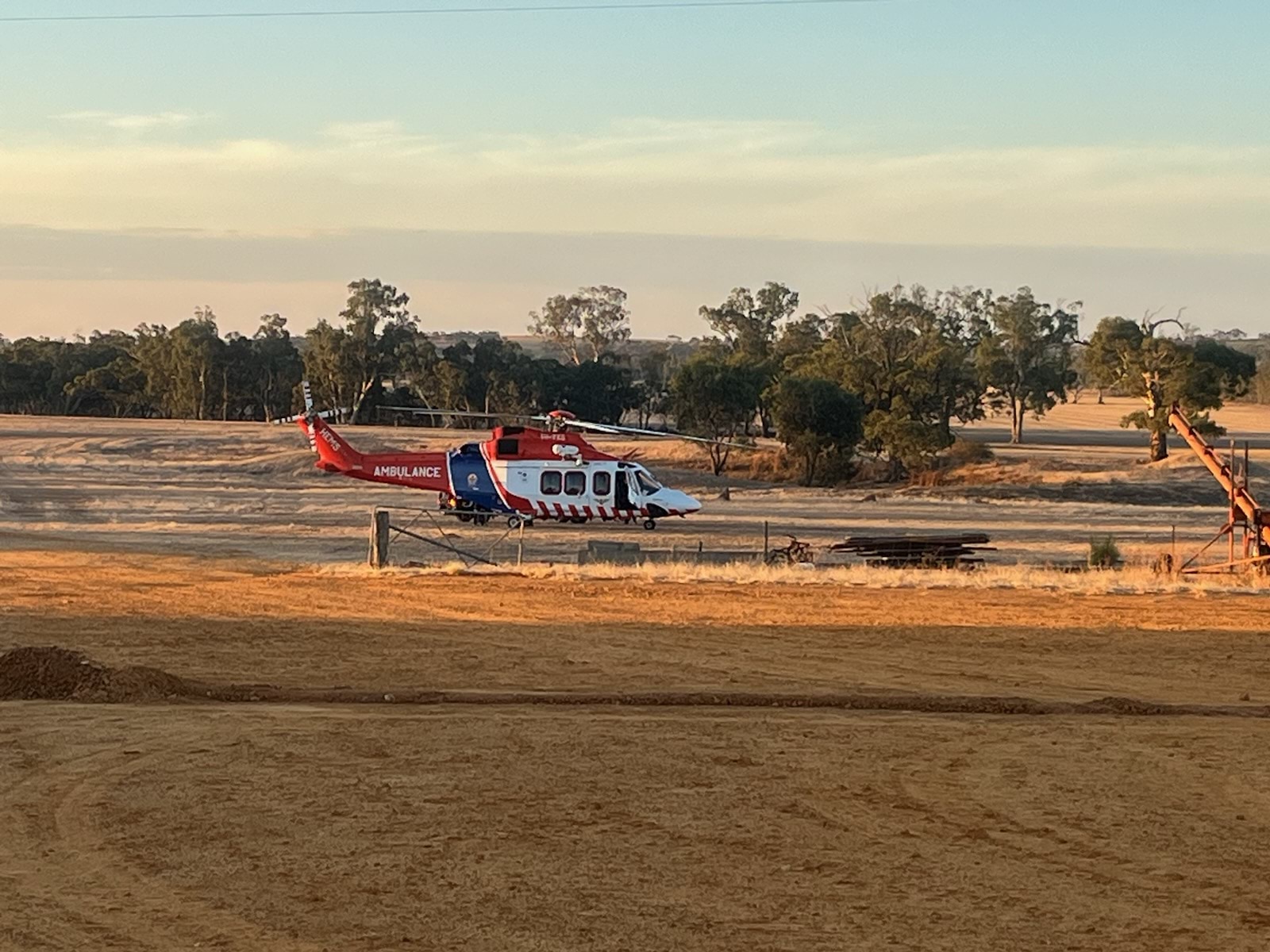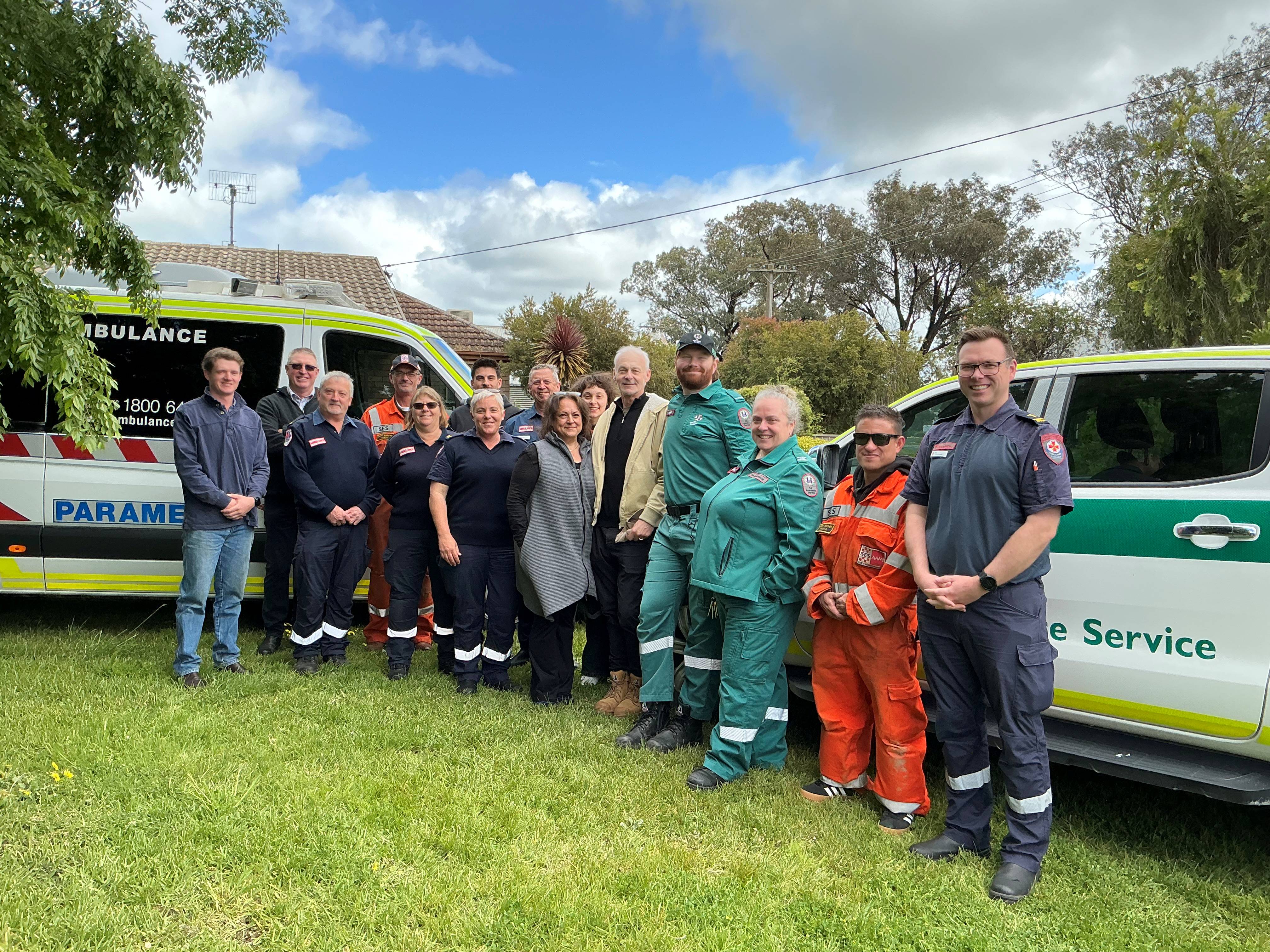- Published:
- Monday 13 October 2025 at 12:20 pm

A truck driver has defied the odds to survive a heart attack and cardiac arrest in the sleeper cabin of his vehicle – requiring more than 40 minutes of cardiopulmonary resuscitation (CPR) and 12 shocks with a defibrillator before his pulse returned.
As part of Ambulance Victoria’s (AV) Shocktober campaign, Ralf Schuback was able to reunite with some of the people who helped save his life, including a farmhand and the local team of AV Ambulance Community Officers (ACOs) who began his critical, life-saving care.
Ralf, 64, began experiencing chest pain while unloading fertiliser from his truck at a farm in Kaniva. Farmhand Ethan Freemantle was concerned by Ralf’s symptoms and called Triple Zero (000).
“When someone that age is having heart trouble, I thought even if the ambulance comes and it’s nothing, it’s better than leaving it to chance,” Ethan said.
“It was a hot day, so Ralf went into the truck with the air conditioning on and lay down.
“In the end, I timed it pretty well – I wouldn’t have wanted to wait much longer to call.”
Off-duty Kaniva ACO Stacey Rabone was nearby and saw the alert on her pager, so went to see if she could help. She arrived to find Ralf in the sleeper cabin of the truck having an ST-elevation myocardial infarction (STEMI), a severe heart attack where blood flow to the heart is completely blocked and without quick treatment, it can cause the heart to stop and lead to cardiac arrest.
Soon after, on-duty and more off-duty members of the Kaniva ACO team – AV first responders employed on a casual basis to work on-call and trained to provide advanced first aid in rural and remote communities – arrived, and as they pulled up, Ralf did go into cardiac arrest.
“He was in the most awful position for us to get to,” Kaniva ACO team leader Michael Hodges said.
“In the truck, you’ve got two comfortable seats with high backs and then there’s a centre console. We couldn’t actually get into the bunk where Ralf was, so when we started CPR, one of us had to lean over the seat to maintain his airway and the other had to lean over the centre console and do compressions. There was no room to move.”
Despite the challenges, the ACOs gave high-quality CPR, used a bag-valve-mask to give manual ventilations and applied a defibrillator, giving the first of the 12 shocks they would deliver.
Ethan also took turns to continue chest compressions and use the bag-valve-mask.
“My mum is a first aid trainer and I’d done CPR at a first aid course before, but never on a person. It didn’t matter though, I knew there was a job that needed doing to help the cause,” Ethan said.
Ethan and the ACOs continued resuscitation efforts, with support from a growing crew of first responders – including paramedics from South Australia and Victoria, as well as Victoria State Emergency Service (VICSES) and CFA volunteers.
Ralf’s pulse returned and by the time he was ready to be airlifted to hospital, he was conscious and breathing.
“Everything was against him except his will to survive,” Michael said.
“There were a lot of people there by the time we got ROSC (return of spontaneous circulation), so we formed a human chain and got Ralf onto a board and finally out of the truck.
“I’ve been an ACO for about 30 years and have been to a lot of cardiac arrests, but this was the first time I’d been able to deliver a shock with a defibrillator and have a positive outcome.
“This is what you do it all for. There were five or six ambulance crews from Victoria and South Australia, a helicopter, firefighters and VICSES volunteers on a farm in the middle of nowhere, all because Ralf was sick.”
Ralf was taken to Bendigo Health by air ambulance where he spent just two and a half days before being discharged home.
Now, Ralf is back at work after five months of rest and rehabilitation, and a trip to Europe that had been booked before his cardiac arrest. He and his family are incredibly thankful to all of those who saved his life.
“I’ve been spending time reading about causes of heart attacks and cardiac arrest survival rates and understand how lucky a person I really am,” he said.
“I want to extend a heartfelt thank you to everyone who contributed to save my life under challenging circumstances.”
Every day, around 21 Victorians experience a cardiac arrest and only one in 10 survive.
Early CPR and defibrillation are critical – for every minute CPR is delayed, survival decreases by 10 per cent.
This Shocktober, AV is calling on all Victorians to learn CPR and know where your nearest publicly accessible AED is, so you can help save a life if someone nearby experiences a cardiac arrest.
Updated





